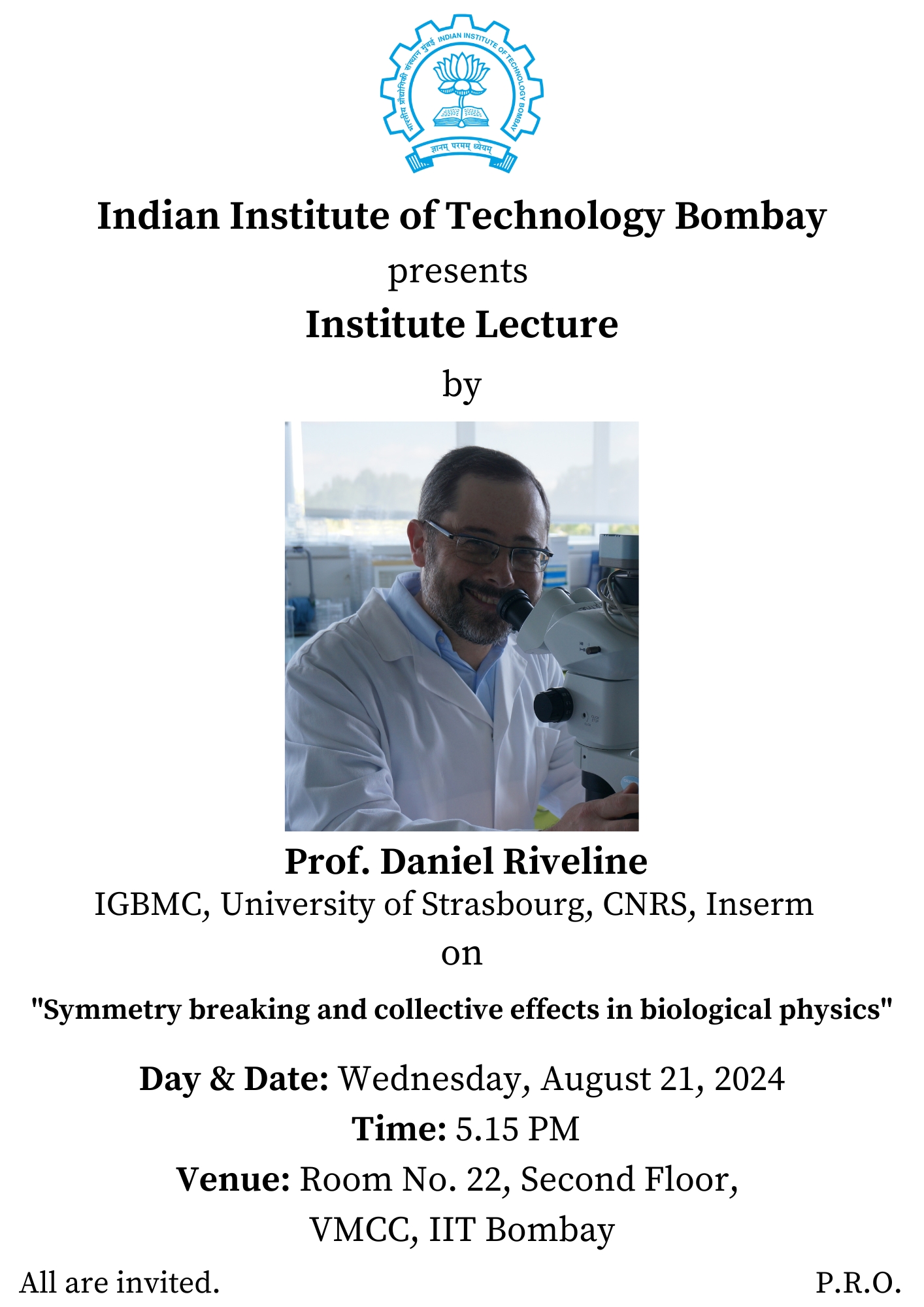The Indian Institute of Technology Bombay is organizing an Institute lecture on August 21, 2024.
The details of the lecture are provided below:

Title: "Symmetry breaking and collective effects in biological physics"
Speaker: Prof. Daniel Riveline, IGBMC, University of Strasbourg, CNRS, Inserm
About the speaker:
Prof. Daniel Riveline is an experimental biophysicist who reported self-organisation phenomena in living matter using physics and quantitative biology. After receiving his PhD in physics in 1997 from the Institut Curie in Paris with Albrecht Ott and Jacques Prost, Daniel went to the Weizmann Institute of Science in Israel for a postdoctoral position in biology with Alexander Bershadsky. In 1999, he started his group at the University of Grenoble. In 2010, after a sabbatical in biology at the Rockefeller University in New York with Paul Nurse, he moved to the University of Strasbourg to establish a group in Cell Physics and launched a new Master program in Cell Physics. Prof. Daniel Riveline, a CNRS Research Director, has revealed for the first time several phenomena: collective effects of myosin molecular motors, mechanosensing of focal contacts and cell-cell contacts, ratchetaxis or directed cell motion in the absence of chemical gradients, the promoted growth of lamellipodia with synthetic compounds, and mechanisms for the constrictions of cytokinetic rings. With collaborations, his team also reported and explained various epithelial morphogenetic events with simple physical rules such as pulsations, flows, spontaneous rotations. Recently, his group reported new self-organisation rules for organoids.
Speaker's webpage: https://riveline.igbmc.science
Abstract:
Biological cells move, divide, change their shapes, adhere to their neighbors and environments to form tissues and organs. These phenomena are essential for a wide variety of biological processes during morphogenesis for example but their mesoscopic origins are often yet not clarified. To characterize them, out-of-equilibrium dynamics can be studied with physical experimental designs and associated theories. These topics have triggered new physical formalisms which call for original experimental calibrations and tests associating tightly quantitative biology with the design of new setups and models for living matter. I will illustrate these experiments of biological physics with the following examples : spontaneous breaking of symmetry for single-cell motion, collective effects in elongation of epithelial colonies, spontaneous rotations in 2D and in 3D. These phenomena will show that basic principles in physics can be used and challenged to unravel new cellular mechanisms with physiological relevance.